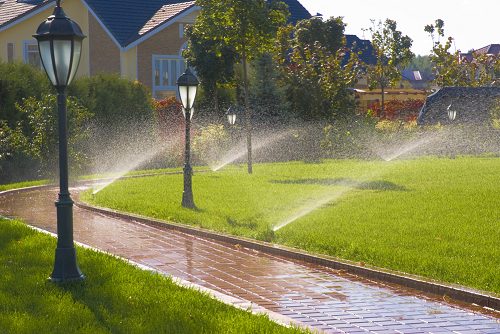The Basics of a Sprinkler System Design
A sprinkler system design keeps your lawn adequately irrigated and lush when you are traveling or cannot water your grass by hand. Designing your sprinkler system is creating insurance for your compound, which means that you should grasp all the basics before signing up.

Components of a Sprinkler System
- Sprinkler Heads
There are two main types of sprinkler heads- rotary sprinklers and spray nozzles. Rotary sprinklers rotate along an arc to distribute water while spray nozzles distribute water in a fan-shaped pre-determined pattern. Both sprinklers can be used in pop-up format and on risers.
- Controller
The controller is the part of your sprinkler system that you program to turn your sprinklers on and off at specific times.
- Valves
The valves control the amount of water moving being sprinkled depending on the type of irrigation zone. For instance, a valve will prevent water from being siphoned back to your house due to pressure changes and reduce water pressure where drip irrigation is required.
How to Create Your Sprinkler System Design
- Measure The Area of Your Compound
Pick up a pen, notebook, and tape measure. Proceed to measure the length and width of your compound and draw it to scale. Your map will determine the area for your sprinkler system. Remember to indicate all the features in your home, including the fence, house, walkways, sheds, and driveways.
- Figure Out Your Water Supply
Contact your local water authority to obtain a water pressure report and measure the water pressure in your house at different points. To do this, find a water gauge. Turn off all the water inside your home and connect your water gauge to the spigot outside your house. Then turn on the spigot to measure your output. You should also find out your gallons per minute (GPM) by measuring the time (in seconds) it takes to fill a gallon container from your outside spigot on full blast, and divide it by 60.
- Divide Your Property Into Hydrozones
Divide the total lawn into hydrozones to avoid overwatering or under watering the grass. The types of hydrozones will vary depending on the area and shape, sunlight and shade, types of plants, and the type of soil.
- Design Your Sprinkler and Pipe Layout
Create a drawing and ensure that all parts of your lawn receive adequate irrigation. Lastly, organize all your pipes, valves, and the controller box to determine how you will lay everything on the grass.
Conclusion
Having a sprinkler system will keep your lawn green all year round. If you have any questions on the perfect sprinkler system design, contact us today.
You can leave a response, or trackback from your own site. Back to Top
Leave a Reply





